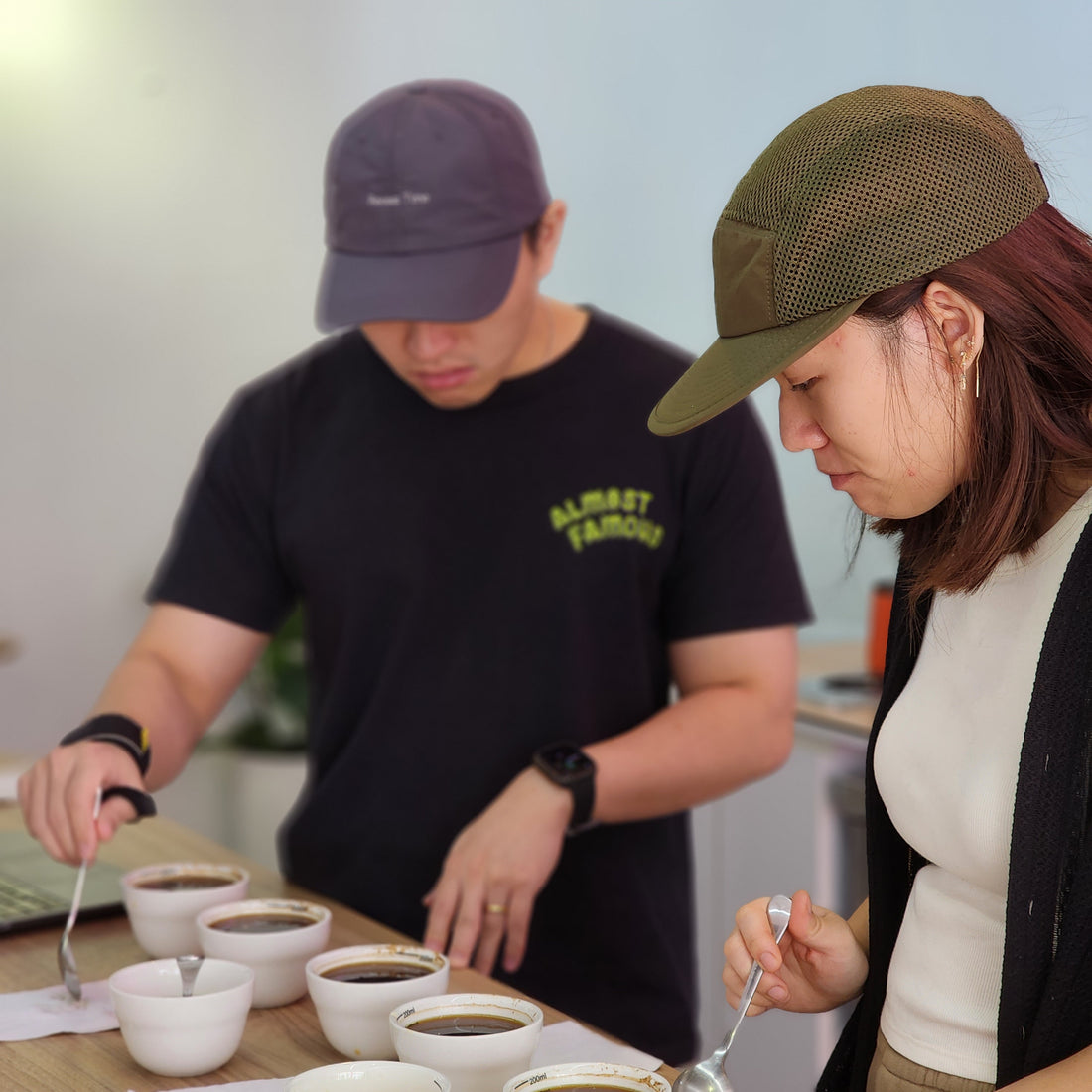Well what do you know, we're neck deep in 2023 & it truly feels like we only just stepped in for a dip.
This piece is meant to be read & digested more as a remark & less as reflection - a genial anecdote of the year thus far.
We'll split our musings into 3 parts; feel free to skip to whichever part you're more interested in or jump straight in if you have the time & headspace to indulge!
SOURCE
In our limited experience & humble opinion, it is almost impossible to judge the quality of greens year on year. You're able to only have a glimpse of its potential at that particular time of that year. One of the most knowledgeable professionals we know of, Christopher Feran, wrote a great piece on the supposed decline of Kenyan coffees, yet those observations laid the square blame on the receding infrastructures that were crucial to produce higher quality coffees. (Read more to understand the deeper, intricate problems Kenya faces as a producing origin.)
Again, referencing our limited experience, we've found the quality of the coffees we've showcased to largely fall into a rather generously-sized window. We believe our curation this year has been relatively consistent, we've returned to purchase coffees from the importers & producers we've enjoyed over the last few years. Yet as we are organically growing, we also saw the need to expand our relationships with newer ones, hence seeking new coffees from new producers & unexplored regions or origins. Some of these newer coffees instantly became favourites, like Ijen Lestari from East Java Indonesia & Nova Washing Station from Rwanda, yet many fell inconspicuously into the unfortunate "unmemorable" collection. It is a little bit like new age dating, it's become physically easier to create new connections, but takes real courage & obligation to commit further.
To sum up, it's been enlightening navigating through this gentle slope of growth, forecasting & incorporating operational requirements amongst logistical issues as well as the real challenge of cash flow. Going direct or even buying from an overseas importer means placing tens of thousands of dollars in good faith knowing you'll only see the physical value 3-6 weeks later at best & at worst, no earlier than 10 weeks. Hence many roasters still prefer the comfort of buying spot. We've been relatively happy with the coffees we've selected through our main importing as well as our direct partners, but it is beginning to seem like we have to start being comfortable seeking beyond.
ROAST
You only roast as good as the coffees you buy. That is the hard truth the majority of consumers aren't necessarily privy to. The spread of quality for "Good" is incredibly wide & there obviously are certain market segments we're fundamentally not keen on dipping our fingers in.
Our direction for roasting hasn't changed for the last few years. 90% of the coffees that we roast are specifically light roasted, suitable for both hand brews & espresso. Since moving into our own facility, we've had the luxury of more concise data that's allowed us to roast, in our opinion, better. What truly is better? We simply focus on 1) Development of Sweetness & 2) Quality of Flavours.
For 1) this means we are consistently aiming to bring out a sweetness that's reminiscent of ripe fruits or even candy. This is intricately linked to the quality of greens that we purchase.
For 2) we are looking to also highlight flavours & Aromas that are distinct. In most cases, we favour vividness of flavours versus variety of flavours. That simply means if we had to choose between showcasing a coffee with 2 vivid flavour notes or a coffee with hints of 5 flavours, we would prefer the former.
Another issue unfortunately tied to the topic of SOURCE, is timeliness. Due to a few occasions of unexpected but very welcome busyness, we have had to use certain coffees much earlier than we would have preferred. We did savour some very enjoyable results, but it always left us with a slight pang of regret: how much better could the coffee had been if we had let the greens rest for an extra month or 2?
These are lessons we've bookmarked, dog-eared to ensure we avoid the same mistakes & continually improve on our practices as well as processes.
Lastly
BREW & SERVE
This is, undisputedly, the most challenging aspect any experience-focused & product-focused company will face. The learning curve of a Barista is incredibly steep, utilising muscles & motions that are typically underutilised. Our training system looks to immediately activate those mechanisms, coupled with intensive tastings for the new baristas to understand the cause & effects of their actions. If you worked part-time 3 shifts a week, you can expect to be proficient in making espresso based beverages in roughly 7 to 9 weeks!
We thought long & hard about how could make coffee more consistently as we grew. The answer became more apparent as we got there - there's absolutely no reason for different shops & settings to be consistent. Instead, we focused on creating a framework & protocols to ensure that the quality of coffees thay were being served checked several boxes, like Balance & Flavour Intensity. The 2nd & more important step was to have a constant as well as consistent calibration amongst all team members, ensuring our taste objectives were aligned. This way, the baristas get the opportunity to explore & express our coffees in a manner that's unique, yet cast against a consistent framework.
CONCLUSION
The route to being a coffee professional is long & dreary at times, a journey not for the impatient nor the inert. The irony is that the rate at which the industry evolves is escalating. Experiments & explorations are endless, making it uncertain but exciting times ahead! What a time to be alive & we are consistently grateful to everyone who is part of this journey with us.

